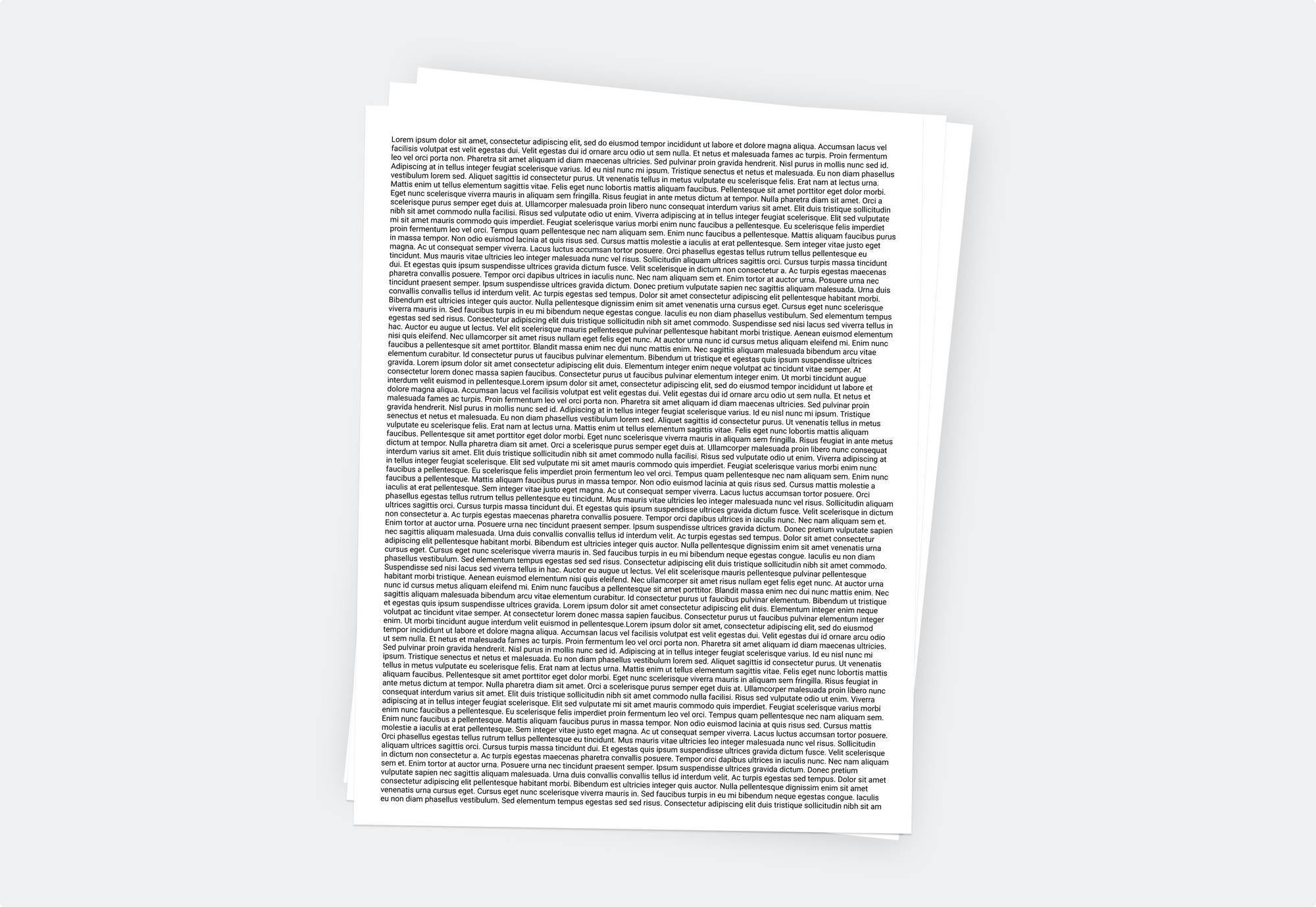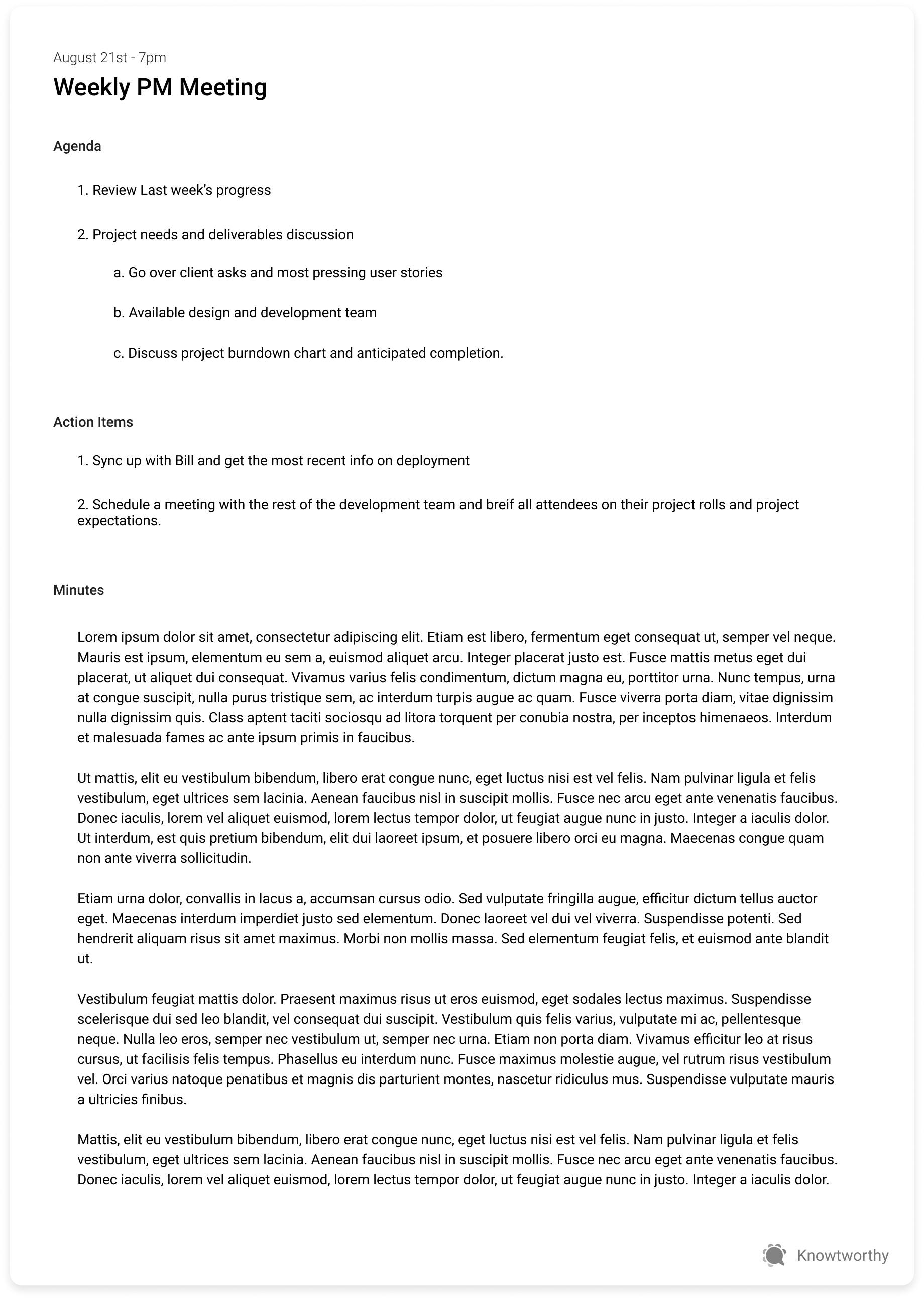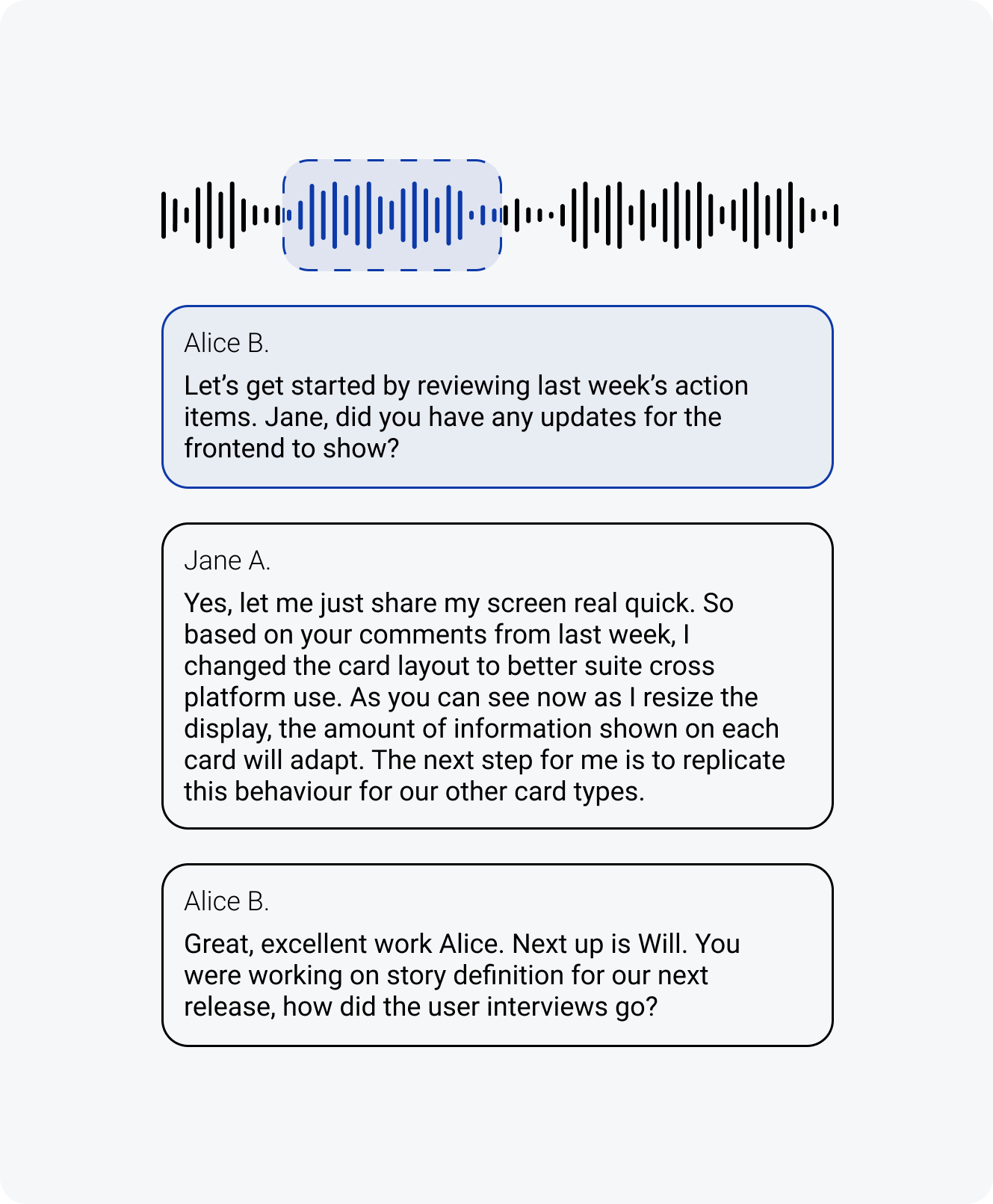Should you Transcribe your Meetings?
Transcription for your meetings is a great tool that can greatly increase your efficiency, but it can also lead to unwieldy minutes. In this article, we take a look at the best way to use transcription in your everyday meetings.

In a perfect world, all of your meeting notes would be nice, formatted documents containing all of the information that comes out of your meetings, so that any time you look back, you can easily get any details that you need. But that's rarely how it plays out. In any given meeting, you are constantly juggling note-taking, personally contributing your thoughts and ideas, and understanding what others are bringing to the table, so meeting minutes are often on the back-burner. Similarly, going back and updating your meeting notes after the fact might seem like a good idea, but this cuts away at the time you can spend on the rest of your work and may not be the best way to spend your time before your next meeting.
So what's the solution? How can you balance taking valuable meeting notes and efficient time management while in a meeting? One solution you may have heard of is audio transcription. If you could write down everything that was said during a meeting and search through it later, you would have created the perfect meeting minutes, right? Unfortunately, personally writing out complete meeting transcripts is an even more absurd proposition than following up on every set of meeting minutes afterwards. How could you hope actively contribute to and learn from your meetings if you have your head down writing the whole time? So, if we leave human transcription for professional stenographers, perhaps there are technological solutions out there that will do the trick!
Meeting transcription technology has gotten better in leaps and bounds over the years and modern speech-to-text neural networks can return highly accurate real-time transcription from good audio. So if you can get your hands on a solid meeting transcription engine, you will have solved meeting notes, right? Not quite, there's a catch. While getting a solid transcription software for your meeting minutes is a great start, if you've ever looked at raw transcripts from a long conversation you'll know that what you have is an impenetrable wall of text that is essentially just as useful as having no notes at all! Furthermore, if your audio quality isn't great or more than one meeting participant is speaking, even the best automatic transcription tools will produce mistakes.

That isn't to say that meeting transcripts aren't useful, but a hybrid approach is critical if you want to maximize your efficiency. To create great minutes, you need to combine
- A great meeting minutes template to keep your note-taking process simple
- The thoroughness of real-time meeting transcriptions
- Your ability to pick out the important information in any meeting
With these key ingredients, you can easily produce excellent meeting notes every time, with minimal effort! In the remainder of this article, we will look at each of these points and discuss how you can get into the habit of writing excellent minutes every time you step into the meeting room.
Step 1: Find a Meeting Minutes Template you Love
The key to being efficient during a meeting is a great meeting minutes template. There are articles out there discussing what you should include in your meeting minutes template, but find one that works for you and one that you can quickly populate. Broadly, your template should have room to outline three main things: your meeting agenda items, meeting minutes, and meeting action items.
Meeting Agenda
The agenda is simply a list of points you wish to cover during the meeting that acts as a guide for the topics that you will cover in more depth in the meeting minutes. There are a number of things to consider when writing your meeting agenda, but make sure to keep in mind the meeting's main goals, how long you have to spend discussing everything, and the required decisions.
Meeting Minutes
The minutes act as your meeting notes and the written record of what happened during the meeting. This is a great place to summarize the key points of the meeting and acts as a place to add context to the action items produced. When writing your meeting minutes, you may want to consider the kind of meeting you are in and the meeting's purpose to determine how formal or conversational you want to be.
Meeting Action Items
This list contains the next steps decided on during the meeting. These are often tasks assigned to specific people on the attendee list. The action items are often considered the single most important thing to come out of any meeting, so above all else, make sure you record your next steps clearly!
You can store your meeting minutes wherever you please: online, on your computer or in a notebook, what matters is that whenever you have a meeting you can quickly get your meeting minutes template ready for use. We personally recommend that you store your minutes online so that you can keep an official record of the meeting and keep online sharing simple for your entire team.

You may want to consider adding additional information to your template covering important meeting details like logging the meeting participants, what the meeting's purpose is, and how much time you intend to spend on each agenda item. Once you are comfortable with your meeting minutes template, you can quickly add information to your document and save time looking for details when you look back on your notes in the future.
Step 2: Run Real-Time Transcription During your Meetings
If the other meeting attendees are comfortable with it (maybe they want in on the excellent minutes as well!) find a real-time meeting transcription software that you can keep on during your meeting. The most important aspect of this step is not that you will have transcripts available to review later, but rather that you can look at a backlog of what was said a minute or two ago in the meeting while you are writing meeting minutes.

Conversation flows fast in productive meetings, and the most unproductive action you can take is to purposely skip mentioning your thoughts or viewpoints in favour of taking minutes. Real-time meeting transcription can provide a fallback that allows you to confidently participate whenever you want to while never missing a beat in your meeting minutes by simply looking back at what was said when there is a lull in the meeting or someone else is making a point. And this leads us right to the final point:
Step 3: Discern what Matters on your Own
A monolith of words won't be helpful a month down the line when you revisit your transcripts, and errors of interpretation often present in meeting minute transcription engines can obscure important points. At the end of the day, you are the best person suited to crafting your own meeting minutes and using transcripts as a tool to keep you engaged and prevent you from missing any crucial details is the best way to make use of this technology. If you use a transcription tool that runs alongside your meeting minutes, you may find it useful to copy and paste some parts of the transcripts directly into the minutes, meeting agenda, or action items. Just make sure that you aren't copying over the entire set of transcripts, focus on what matters.
In the example below, notice that we select just the key point from the transcript to copy over instead of the whole paragraph. When choosing how best to make use of your meeting transcripts, try and think critically about what you would find the most useful a month or a year from now when looking back on all of your previous meeting minutes and only record notes on those items.

Use Meeting Transcription to your Advantage
With these tools in mind, take a moment to reflect on your current meeting process and ask yourself if real-time transcription next to your minutes would be useful and if it would make you a more efficient minute-taker. If yes, start by setting up your template for your next meeting and enjoy the added boost of efficiency and confidence that these tools add to your professional arsenal!
